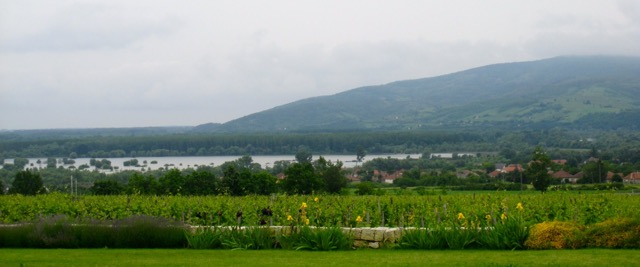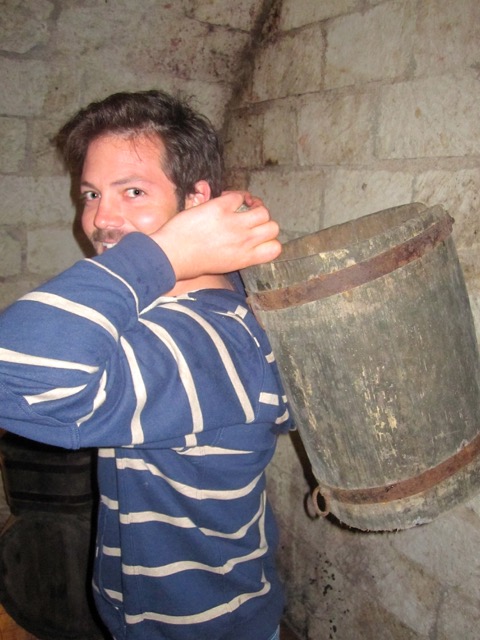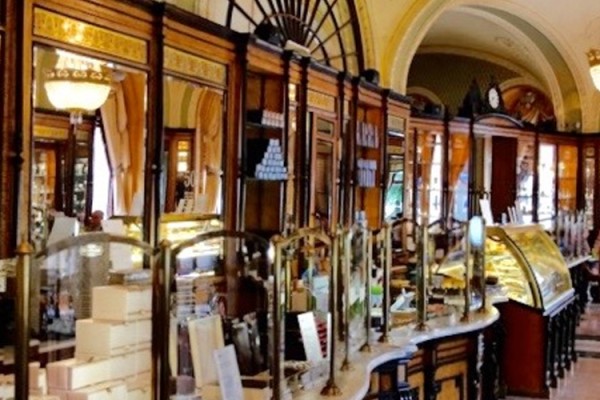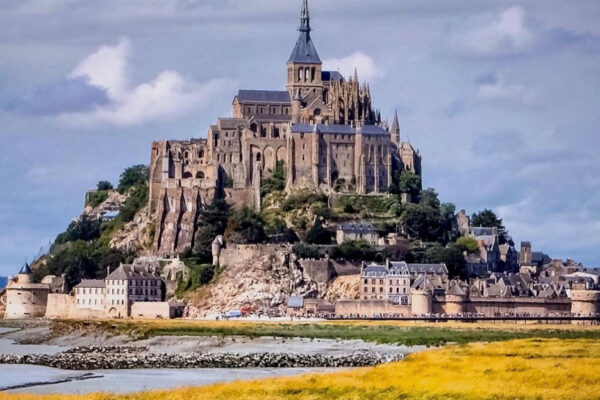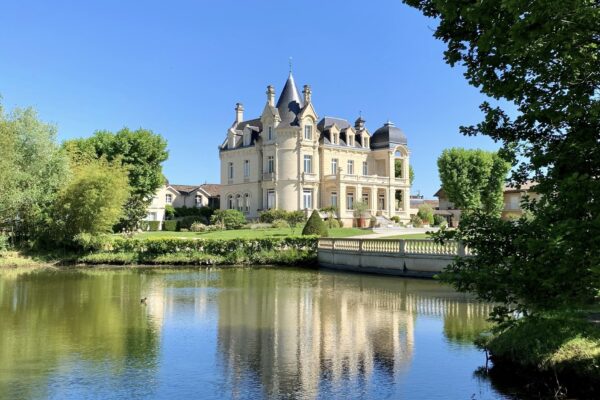Curious & Thirsty: Hungarian Tokaji
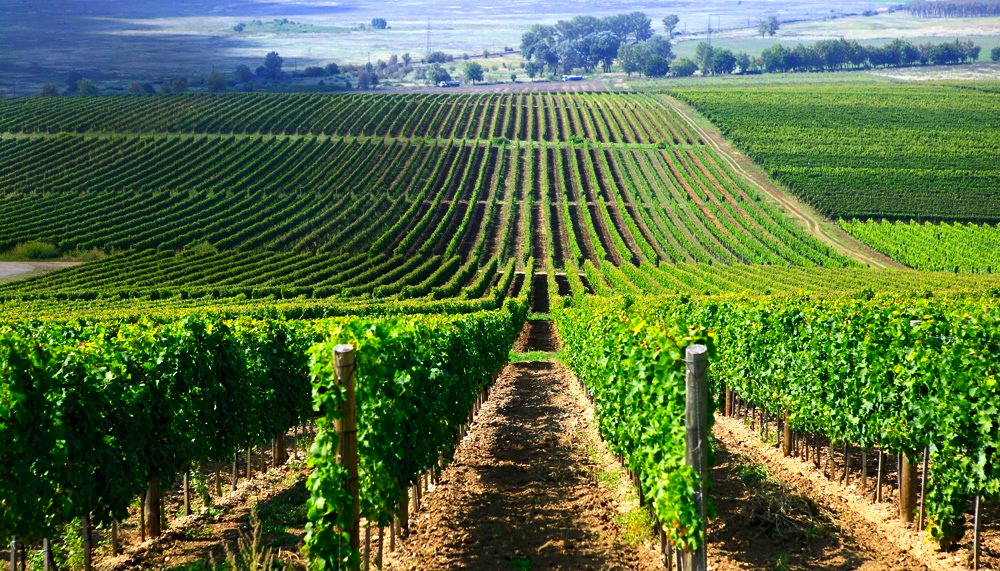
The wrinkled slopes that unite the 27 villages entitled to the Tokaji designation were the first vineyards in the world to be classified. Photo by Stetson Robbins.
by Stetson Robbins of Blue Danube Wine Co.
Do you remember Terry Gilliam’s quasi children’s film from the 80s The Adventures of Baron Munchausen? In it, the Baron is served the Sultan’s favorite Tokaji, which the Baron compliments and then wagers that he can bring the Sultan one even finer from the “Imperial Cellar of Vienna.” The Baron spends the better part of the film doing this. I remember as a child wondering what that wine might taste like? Indefinably alluring and addictive, Tokaji leaves those who fall for it wide-eyed, dumfounded, blubbering, even mad. To my adult self Tokaji is what my child self would have fantasized: Magic wine.
It is no accident that Tokaji was famously declared by Louis XIV as, “The king of wines, the wines of kings.” The wrinkled slopes that unite the 27 villages entitled to the Tokaji designation were (beginning in 1730) the first vineyards in the world to be classified and to have the wines protected. In the U.S., wine is typically labeled by the grape it is made from: Chardonnay, Pinot Noir, Cabernet Sauvignon, etc. For this reason Tokaji is often misunderstood to be a grape, when it is actually a wine from the appellation – Tokaj-Hegyalja.
In Hungary, like in France, Italy and most of wine-producing Europe, wine is identified by where it comes from. The “i” in Tokaji is possessive. Tokaji is a wine from the region of Tokaj. For hundreds of years, Tokaji was the toast of royalty, czars, philosophers, artists and thieves. So delicious, enduring and rare Tokaji became legendary and brought traders, their families, their culture and traditions from many corners of the world.
Then came the devastation wrought by insects, World Wars, and finally communism. Prior to the wars and their ruinous consequences, the Tokaji hills supported many small, successful private producers. With communism, private production was collectivized. Grapes went to the factory to be combined. Quality was determined by quantity and strength of alcohol, more than character. Traditions were preserved at home. But had it not been that the wines are naturally so wonderful and expressive of Tokaj, they would surely have been erased.
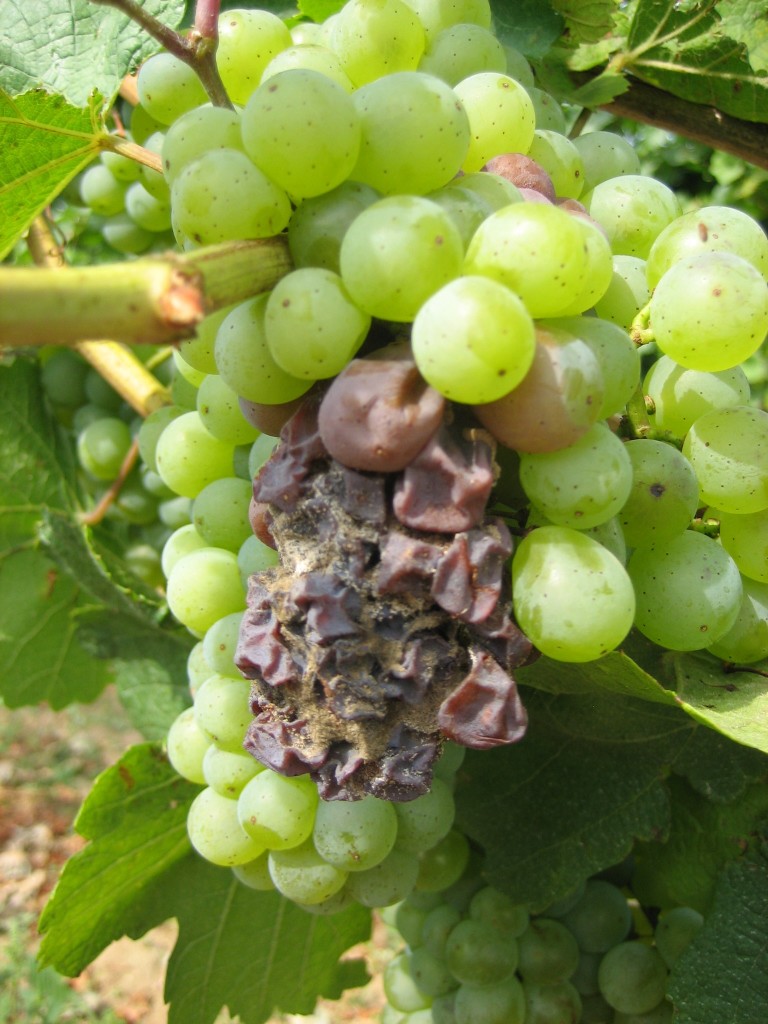
Botrytis Cinerea, or nobel rot, is a fungus that concentrates the sugars in grapes while contributing its own flavors. Photo by Stetson Robbins.
What makes Tokaji so special, is the remarkable convergence of countless geographical, climactic and cultural conditions. In 2002 UNESCO deemed the region a world heritage site. Located in North-Eastern Hungary, only wines made from white grapes are permitted to bear the name Tokaji. Before World War I there were over 100 varieties of grapes grown. Today there are fewer than 10 permitted. The most common grape varieties, Furmint and Hárslevelű, are believed to have come from the Carpathian Mountains in present day Romania. In coming years it can be expected that old cultivars will be reintroduced, but many have been lost forever.
The wines that made Tokaji famous were unanimously sweet. But they could be wines for you too — just stay with me for a moment and I’ll explain! Eszencia, the rarest style can be as sweet and thick as honey. What enables the production of this wine may surprise you. Botrytis Cinerea, a fungus that develops on the grapes themselves, slowly desiccates and dehydrates them. This process concentrates the sugars and the character of the variety and the vineyard, while contributing its own flavors. The wines it renders are unparalleled in their complexity and longevity. Mythic tales of wine aging gracefully for 300 years are not unreasonable. Due to the special conditions natural to Tokaj, Botrytis literally defined the wines in Hungary. The Botrytized wines are called aszú.
Two rivers – the Bodrog and the Tisza – wind along the southern facing slopes of volcanic foothills in Tokaj. Protected from north winds in the fall and summer, vapor from the rivers, gathers along the bases of these old volcanoes. As the sun rises, the fog burns off and the clusters dry. This alternating between warm humid and warm dry conditions is ideal for the development of noble rot. The phenomena happens nowhere with greater regularity, consistency or quality, as in Tokaj.
The particular character of Tokaji aszú wines is as fundamental to it, as bubbles are to Champagne. Individually, aszú berries are painstakingly picked by hand and collected in baskets called puttonyos. Traditionally this is done by women. The best pickers are often the oldest and most experienced. The aszú harvest is mashed into a super sweet, thick black paste. This paste is mixed with a fresh wine made from unaffected grapes of the same or previous vintage; the more puttonyos of aszú fruit, the sweeter the wine.
Aszú wines are the most labor intensive wines in the world. After a few days this pulpy blend is pressed and put into barrels of locally grown oak, where it ferments and ages for a minimum of two years in labyrinth cellars dug into the volcanic tufa. More nectar than wine, Essencia is the basket drippings from the aszú harvest. So sugar rich, it must be aged in glass as it would literally dry out in a barrel. Aszú wines were historically administered as medicine to the super rich. Modern investigation has established there is some health benefit from these wines.
After communism ended in the 1990’s, a rush of investors, both foreign and domestic, bought up vineyards with the intention of resurrecting this dormant legend. The potential in the wine was re-realized almost immediately. However, the world’s thirst for sweet wines had turned dry. A blessing in disguise, clever producers began to experiment with making dry wines. Today, it is the dry wines that offer winemakers and enthusiasts the greatest insight into the character of the specific vineyards. In addition to the classical aszú and modern dry wines, adventuresome wine makers are reviving almost forgotten traditional styles and experimenting with new styles. What is most amazing, is that regardless of forms, the distinct signature Tokaj leaves on its wines dominate. The natural conditions in the region are so unique, nothing like Tokaji can be produced elsewhere – even with all the knowledge and technology available now. There is a Renaissance under way in Tokaji, unlike any the wine world has ever seen. It is quite possibly the most exciting place to be drinking from today.
Dry or sweet, traditional or modern, and at all levels of cost, Tokaji should stand out from all other wines. Their quality is as much a matter of texture as it is aroma. How a wine “feels” is critical to the full appreciation of it. Temperature and aeration are also important, as the temperature and exposure to air increase the character of the wine changes. Tokaji can not be fully appreciated through tasting because of this evolution. It must be consumed. Tokaji can be extraordinarily complex, and full of opposites: sweet and sour, mineral and fruity, silky but spicy, old but youthful and so on. Add to this, the nuance of vineyard site, vintage character and age of a given wine, it is no surprise that some enthusiasts spend their entire lives trying to understand this complex appellation’s wines.
Thankfully a life’s study is not needed to enjoy them! While they can be among some of the most thought-provoking wines, they also offer great pleasure; some could even be called hedonistic. Tokaji’s many unique profiles and vast range make it, as a category, incredibly effective with food. Most any dish could be paired with a Tokaji, even red meat. From dishes as light as poached sole, to pungent Szechwan, to the strongest of cheese, to the sweetest dessert — there is a Tokaji that will match.
If you really love wine — not just its aromas, flavors or the buzz it gives — but the culture and traditions wine springs from and the people who make them, go to Tokaj. Walk its ancient vineyards and meet its modern interpreters. They wait for you with a glass extended. There is no better way to do this than through Taste Hungary run by a Gabor and Carolyn Bánfalvi.
If you want to travel to Tokaj without having to pack, order online directly from us at the Blue Danube Wine Co. We are Tokaji nuts!
 Stetson Robbins is the Blue Danube Wine Co. Sales & Distribution Manager for New York & the East Coast. Stetson and his wife Kristyn relocated to Brooklyn, New York in the Summer of 2012, to further the East Coast efforts of Blue Danube Wine Co. Stetson joined the team in Spring of 2008 as the first dedicated Southern California sales person. His obsession with wine is credited to a life-long interest in the institution of dining and his studies of Greek wine culture while earning a degree in Theater Arts at Long Beach State, where he acted in, directed, wrote and produced plays.
Stetson Robbins is the Blue Danube Wine Co. Sales & Distribution Manager for New York & the East Coast. Stetson and his wife Kristyn relocated to Brooklyn, New York in the Summer of 2012, to further the East Coast efforts of Blue Danube Wine Co. Stetson joined the team in Spring of 2008 as the first dedicated Southern California sales person. His obsession with wine is credited to a life-long interest in the institution of dining and his studies of Greek wine culture while earning a degree in Theater Arts at Long Beach State, where he acted in, directed, wrote and produced plays.
For Stetson, wine is part of an aesthetic total that brings together nature, culture, history and the human desire to share. He posses vigorous tasting habits and has spent considerable time abroad with wine producers. In addition to sales and distribution, he develops content for the website and regularly hosts tastings for both professionals and consumers, with equal enthusiasm. When not exploring New York’s vast food and wine scene, he can be found in the kitchen with Kristyn or running, playing golf, skating half pipes and trying to find surf in New York.
Read more of Stetson Robbins’ wine travels: Vienna: Wien (Wine) City & Slovenian Wines


